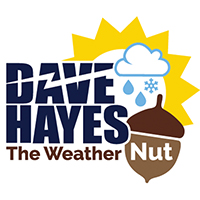it should be noted that scientists don’t truly understand how tornadoes are formed, but we do know some aspects of what causes development. Tornadoes are the opposite of microbursts, in that they are caused in the updraft regions of thunderstorms, and indicate inflowing, violently up drafting air. Wall clouds and funnel clouds are actually not technically lowering, per se, but are building down from the cloud base, due to condensing rising air.
Tornadoes usually form along dry lines, which are frontal boundaries where moist humid air meets and makes contact with dry arid air. This usually happens when air from the southwest deserts or Rockies meet with air from the Gulf of Mexico, but can also happen with dry Canadian air meets up with moist air from the Gulf, or from the Atlantic Ocean.
There are 28 damage indicators, and 8 scale degrees for each indicator in the Enhance Fujita Scale that was instituted in 2007 that help to define whether or not the tornado fits into one of six categories based on its severity that range from EF-0 to EF-5
Here is a link to the Enhanced Fujita Scale

